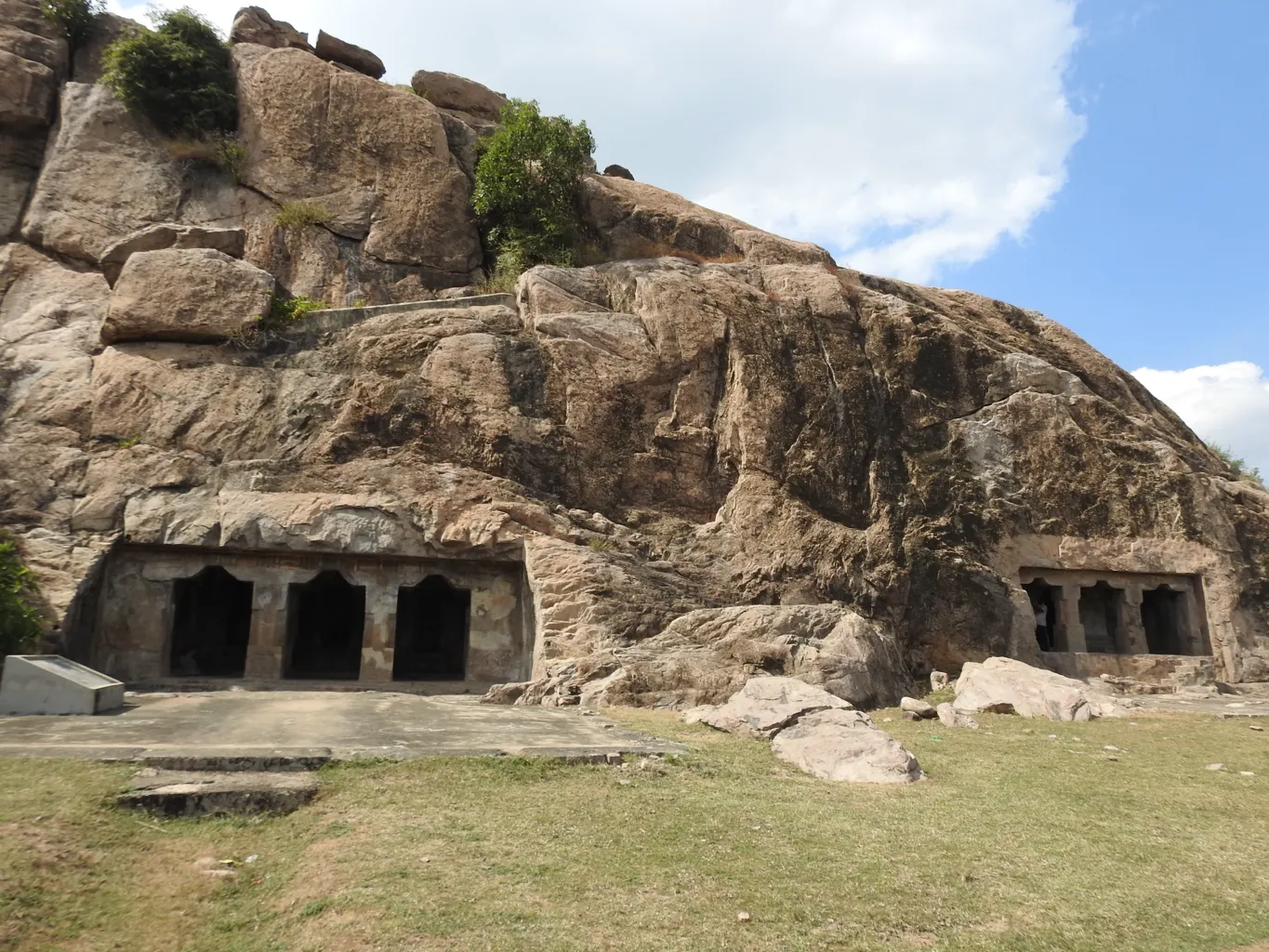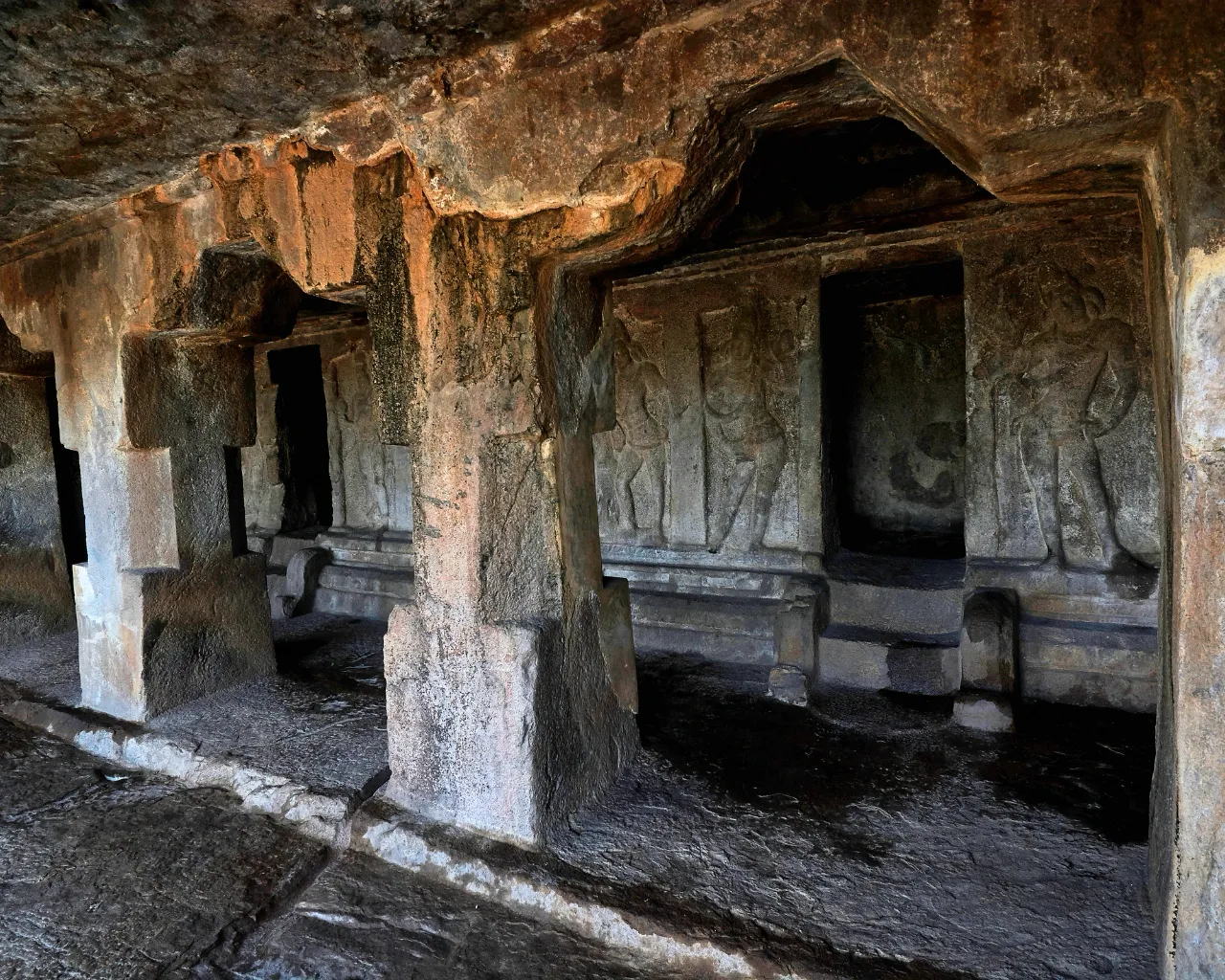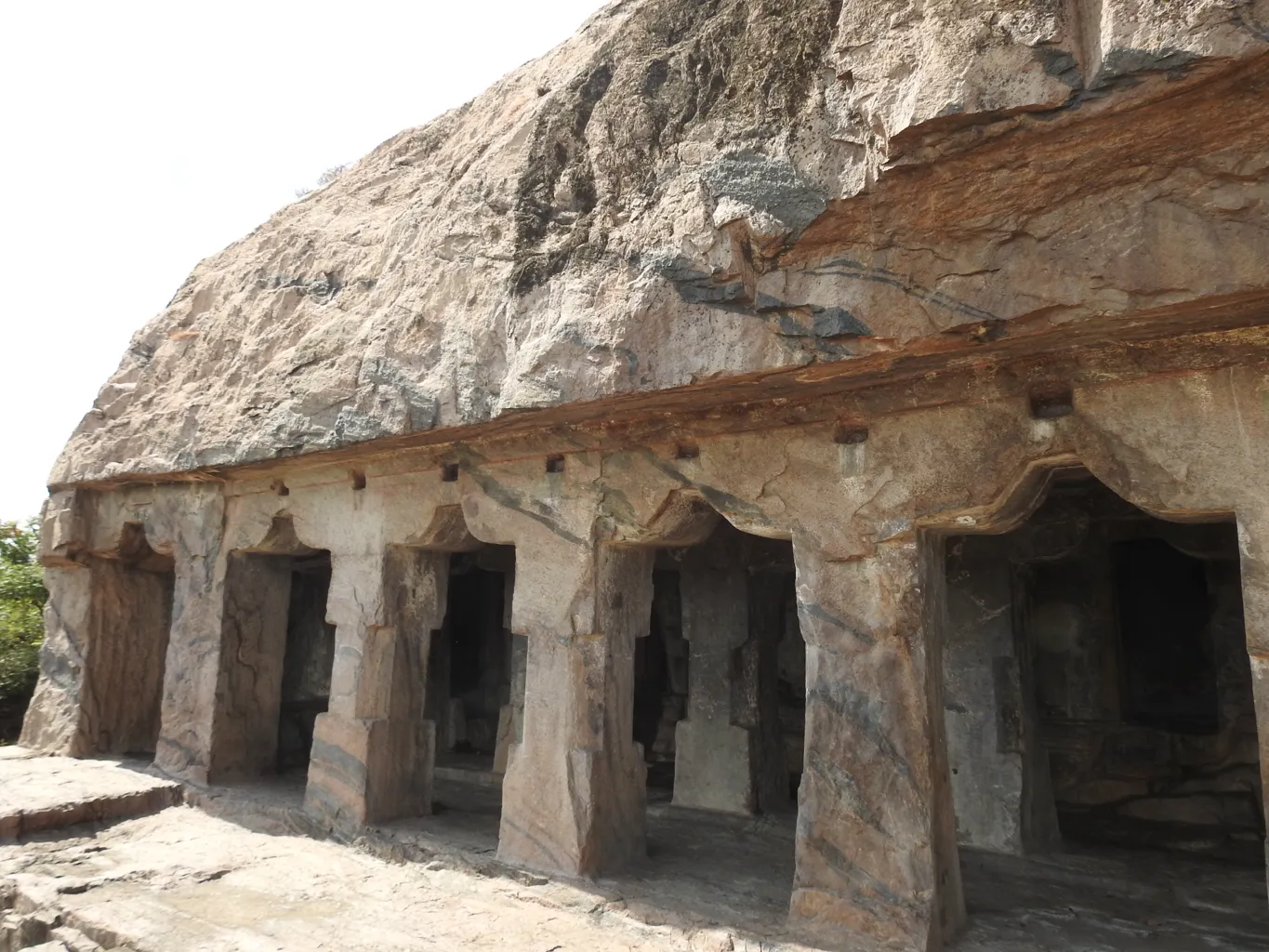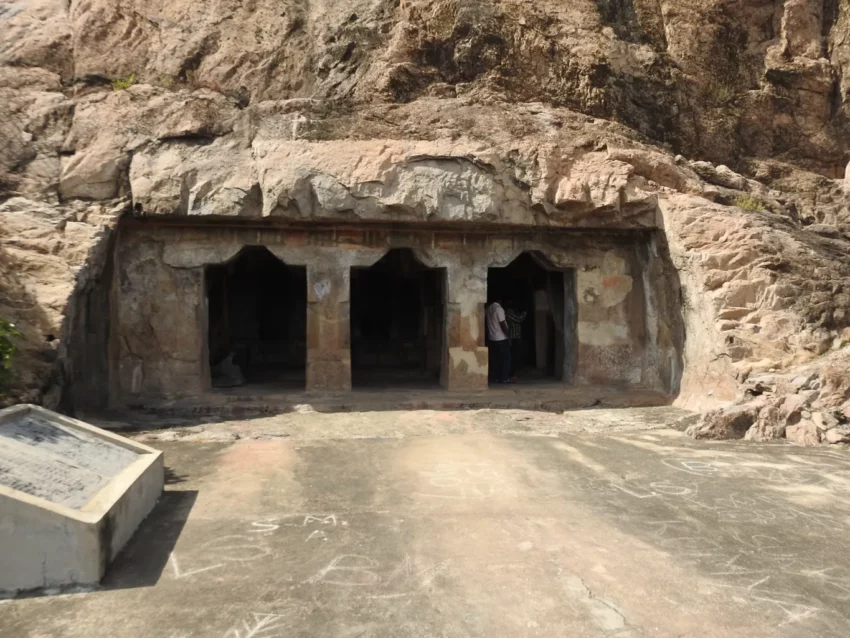The Rock-Cut Wonders of Mamandur: A Glimpse into 7th-Century Pallava Architecture
Mamandur, a village in Tamil Nadu’s Tiruvannamalai district, sits just 10 kilometers from Kanchipuram. This village is renowned for its 7th-century rock-cut cave temples, which feature Tamil Brahmi inscriptions. These temples, declared monuments of national importance, showcase the Pallava dynasty’s remarkable contributions to art and architecture.
Get your dose of History via Email

The Vision of Mahendravarman I
King Mahendravarman I, a Pallava ruler, played a pivotal role in creating the rock-cut temples of Mamandur. He earned the titles “Vichitra Chitta” (Curious-Minded) and “Chitrakara Puli” (Tiger Among Artists) for his dedication to the arts. Mahendravarman I pioneered rock-cut architecture in South India, with Mamandur being one of the most significant sites, alongside Mamallapuram, Pallavaram, and Siyamangalam.
A Journey Through the Cave Temples
The Mamandur cave complex includes four distinct temples, each offering a unique glimpse into the era’s architectural prowess. These caves, located along the scenic banks of the Palar River, add both historical and natural beauty to the site.

Cave Temple 1
As you approach Cave Temple 1, you’ll climb a staircase carved directly into the hill. The temple’s façade, featuring two pillars and two pilasters, showcases intricate details like lotus medallions. A central shrine, dedicated to Vishnu, extends from the back wall, embodying the artistic elegance of Mahendravarman’s era. An inscription on the northern wall reveals the king’s desire to innovate in the realm of music.
Cave Temple 2
Just south of the first cave, Cave Temple 2 awaits exploration. This temple includes an ardha-mandapa and a mukha-mandapa, separated by two rows of pillars. Inside, you’ll find three sanctum sanctorums, each dedicated to a different deity: Brahma, Shiva, and Vishnu. The central sanctum, known as Uruttiravalisvaram, honors Shiva. The dvarapalas (door guardians), depicted in the tribhanga pose, hold clubs intertwined with serpents, adding to the temple’s spiritual significance. Additionally, faint traces of paintings suggest the temple once dazzled with vibrant colors.
Cave Temple 3
Cave Temple 3, the largest in the complex, lies further south. The temple’s façade boasts five pillars and two pilasters, though the structure remains unfinished due to cracks in the rock. Inside, you’ll notice the clear distinction between the ardha-mandapa and mukha-mandapa, marked by rows of pillars. The back of the cave features five empty shrines on a shared platform, indicating plans for multiple deities.
Cave Temple 4
Cave Temple 4, the smallest and most incomplete, offers another glimpse into the era’s architectural ambitions. With two pillars and two pilasters, the façade suggests the temple was intended to house three shrines. However, due to significant cracks in the rock, construction halted, leaving this temple unfinished.

The Chitramegha Tataka Tank
Behind the caves, the Chitramegha Tataka, also known as the Dusi-Mamandur tank, stands as a testament to Mahendravarman I’s engineering expertise. He likely ordered its excavation to support local irrigation, further cementing his legacy in the region’s history.

Conclusion
The Mamandur cave temples, with their intricate carvings and inscriptions, highlight the Pallava dynasty’s early architectural innovations. These temples laid the foundation for the Dravidian temple architecture that would later flourish across South India. Today, as national monuments, they continue to be preserved, allowing future generations to marvel at the rich heritage left behind by the Pallavas.
Sources:

